
Hippotion celerio, the vine hawk-moth or silver-striped hawk-moth, is a moth of the family Sphingidae. It was described by Carl Linnaeus in his 1758 10th edition of Systema Naturae.

The black arches or nun moth is a small Palaearctic moth. It is considered a forest pest.

Hofmannophila is a genus of moths in the concealer moth family Oecophoridae. It is monotypic, with the single species Hofmannophila pseudospretella, the brown house moth, which appears to be closely related to species of the genus Borkhausenia.

Kocakina is a genus of moths of the family Noctuidae. It contains only one species, Kocakina fidelis, the intractable quaker moth, which is found in North America, where it has been recorded from Quebec and Maine to Florida, west to Texas and Kansas. The habitat consists of dry woodlands. The former genus name, Himella, is a junior homonym, and was replaced by Kocakina in 2006.
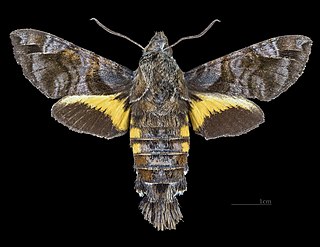
Macroglossum insipida, the hermit hummingbird hawkmoth, is a moth of the family Sphingidae. It was described by Arthur Gardiner Butler in 1875.
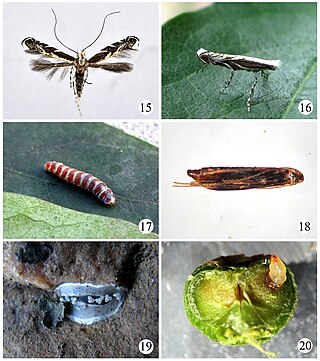
Epicephala relictella is a moth of the family Gracillariidae. It is known from the Russian Far East, China and Korea.

Cosmopterix clandestinella is a moth of the family Cosmopterigidae. It is known from the United States.

Cosmopterix clemensella is a moth of the family Cosmopterigidae. It is known from Canada and the United States.
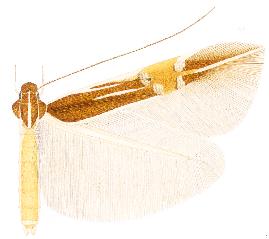
Cosmopterix erinome is a moth of the family Cosmopterigidae. It is known from the United States.

Cosmopterix etmylaurae is a moth of the family Cosmopterigidae. It is known from Costa Rica.

Cosmopterix galapagosensis is a moth of the family Cosmopterigidae. It is known from the Galapagos Islands.

Cosmopterix harpalyke is a moth of the family Cosmopterigidae. It is known from the Federal District of Brazil.

Cosmopterix lespedezae is a moth of the family Cosmopterigidae. It is known from the United States.
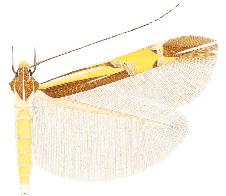
Cosmopterix madeleinae is a moth of the family Cosmopterigidae. It is known from the Galapagos Islands.

Cosmopterix nishidai is a moth of the family Cosmopterigidae. It is known from Costa Rica.
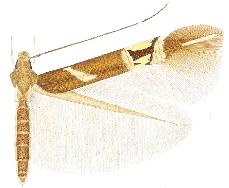
Cosmopterix nitens is a moth of the family Cosmopterigidae. It is known from the United States, where it is found from coastal South Carolina to south-western Texas. It is also established in Michigan.

Cosmopterix thelxinoe is a moth of the family Cosmopterigidae. It is known from Brazil and the United States.

Cosmopterix xanthura is a moth of the family Cosmopterigidae. It is known from Mexico (Tabasco). Adults have been recorded in March.

Dejongia lobidactylus is a moth of the family Pterophoridae. It is found in the north-eastern United States and central Canada.

Ichneutica atristriga is a moth of the family Noctuidae. It is endemic to New Zealand and is found through out the North, South and Stewart Islands. The larval hosts likely include tussock grasses included Poa cita, P. colensoi and Festuca novae-zelandiae. Larvae have been reared on species in the genera Bromus and Festuca. The adults of this species are on the wing from November to May. I. atristriga can possibly be confused with the smaller species I. propria. However I. atristriga has thorax and forewings that have a pinkish tinge and I. propria has a dark streak on the discal part of the forewing which I. atristriga lacks. A study has indicated that the population numbers of this species have decreased.









